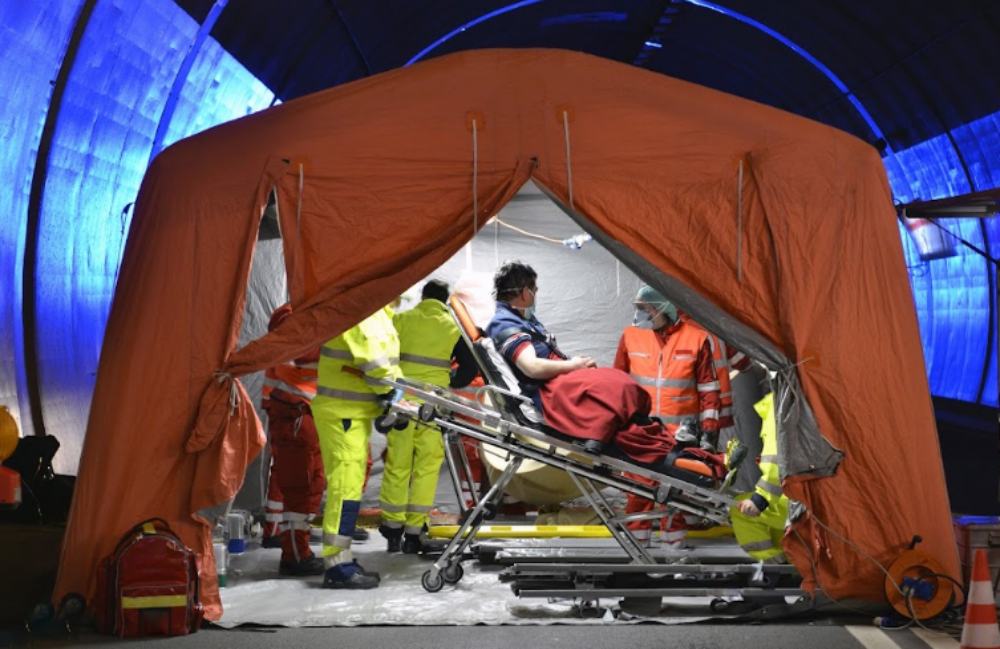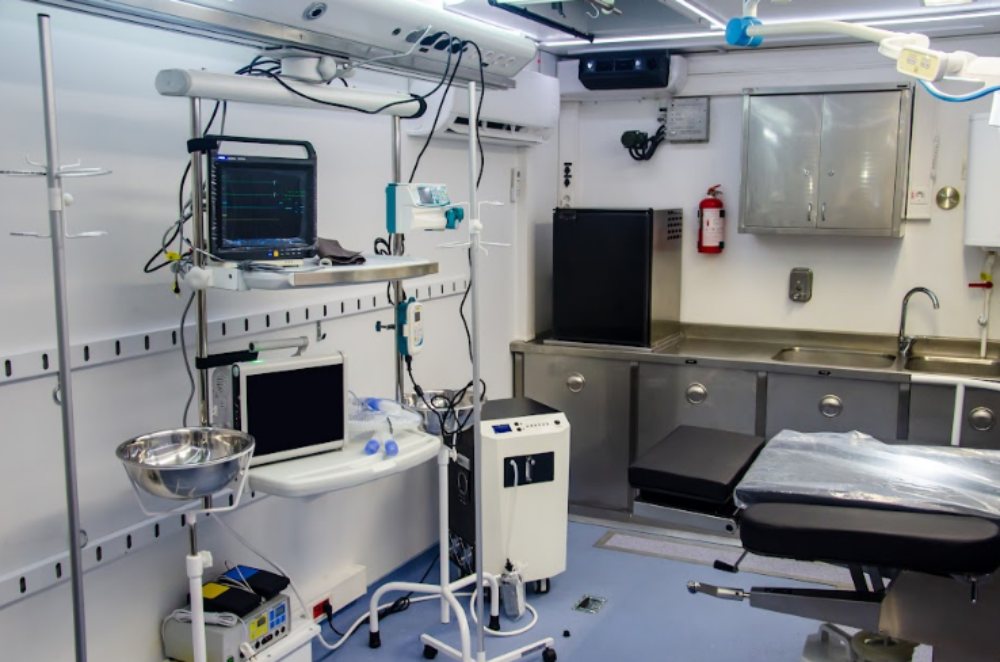When mass casualty incidents happen—for instance, a natural disaster, an industrial accident, or a ghastly act of terrorism—hospitals are quickly filled with injured patients. Emergency response could take time, and the nearest available medical facility could be miles away.
In these situations, a mobile field hospital could help provide emergency health care without delay. Mobile hospitals are essentially medical facilities on wheels. They’re packed with cutting-edge equipment and staffed by skilled professionals.
So, how are they transforming emergency healthcare delivery? Let’s discuss some scenarios where these ambulant medical units are making a difference:
Table of Contents
What are Mobile Hospital Facilities, and How Do They Work?
Mobile hospitals are self-contained medical units designed for rapid deployment and operation in diverse settings. As such, they come in various sizes and configurations, from vans equipped for basic health care to full-fledged medical trailers housing operating rooms and intensive care units.
Here’s how they usually work:
Deployment
These units are designed for quick setup, often taking just a few hours to become operational—like a field hospital in rural areas.

Self-Sufficiency
Many mobile hospitals are equipped with generators, water purification systems, and waste disposal units, allowing them to function independently of local infrastructure.
Equipment and Supplies
These units are stocked with essential medical equipment, from basic devices like a folding hospital bed to diagnostic tools like X-ray machines, laboratories, surgical equipment, and medications.
Staffing
Mobile units are staffed by qualified medical teams, such as doctors, nurses, paramedics, and technicians, ensuring a high standard of care.
These equipped mobile units can be driven or airlifted into disaster zones, rural areas lacking hospital access, or anywhere a temporary medical facility is required.
Making Emergency Healthcare More Accessible
Some people choose to skip urgent care for various reasons, but the remoteness and costs are top of the list. A 2022 survey revealed that 38% of Americans either avoided or procrastinated getting emergency medical services because they couldn’t afford them.
Bringing emergency services at the right time and place addresses these concerns. A mobile health unit can be used for the following purposes:
1. Bridging the Gap in Remote Areas
Accessibility is a major hurdle in many parts of the world. Rural communities often lack adequate healthcare facilities, forcing residents to travel long distances for basic medical attention.
Mobile hospitals bridge this gap by bringing essential healthcare services directly to people’s doorsteps. For instance, a mammogram screening unit can stay in a remote village. Similarly, a dental clinic or oral health services unit can be deployed in an underserved area. These mobile units provide crucial preventive and diagnostic care, potentially saving lives through early detection.
2. Provide Lifesaving Care in Disaster-Hit Communities
Natural disasters can wreak havoc on infrastructure, including hospitals. Mobile units, designed for swift deployment, can be crucial in the aftermath of earthquakes, floodings, wildfires, and hurricanes. Their mobility allows these units to be pre-positioned ahead of predicted disasters, ensuring medical care is standing by before the first patient arrives.
Equipped for triage, treatment, and even surgery, these mobile emergency care facilities provide immediate medical support to those affected. Their self-sufficiency allows them to operate in areas with compromised utilities.
3. Taking Strain Off Communities’ Emergency Healthcare Resources
Beyond patient care, mobile hospitals help reduce the immense strain disasters place on impacted communities. When local hospitals aren’t working at full capacity, there’s always room for lesser emergencies like childbirth. A mobile unit’s self-sufficiency also means other utilities and staff aren’t overtaxed or stretched thin responding to the crisis.
Communities investing in mobile hospital capabilities get peace of mind knowing these highly capable units are ready to be deployed at a moment’s notice when disaster strikes.
4. Advanced Capabilities for Enhanced Emergency Response
While basic mobile hospitals have existed for years, advanced units have appeared, ready for deployment in specific situations. For example, a few specialty field hospitals with isolation modules were deployed during the COVID-19 pandemic. Additionally, some mobile medical units have automated laboratories or sophisticated imaging capacities that allow remote monitoring.
Mobile intensive care units (MICUs) are equipped with ventilators, cardiac monitors, and advanced life support systems. With these pieces of equipment, paramedics and critical care nurses can administer lifesaving interventions while transporting patients to a full-fledged hospital—significantly improving patient outcomes
5. Specialized Care on the Move
Mobile hospitals aren’t limited to emergencies. They offer a versatile platform for delivering specialized care, including chronic disease management. For instance, a mobile ophthalmology clinic is equipped for eye exams and cataract surgeries, bringing vision back to a community in need. Similarly, mobile mental health units can provide crucial support in areas with limited access to psychiatrists or therapists.
6. Proactive Medical Support in Public Events
Large gatherings like concerts, marathons, and sporting events often require on-site medical support. Mobile clinics provide immediate patient care for minor injuries, heatstroke, or allergic reactions, preventing escalation and ensuring a safe environment for everyone involved.

Wrapping Up
Emergency healthcare response can literally spell the difference between life and death— and accessibility plays a key role. What began decades ago as basic field hospitals have rapidly evolved into cutting-edge mobile facilities providing high-quality care in the most challenging environments. As technology continues to advance, so are their lifesaving possibilities.
However, despite these benefits, mobile hospitals aren’t meant to replace brick-and-mortar medical facilities. Think of these movable units as their equally capable extension, saving lives in situations where every second counts.
